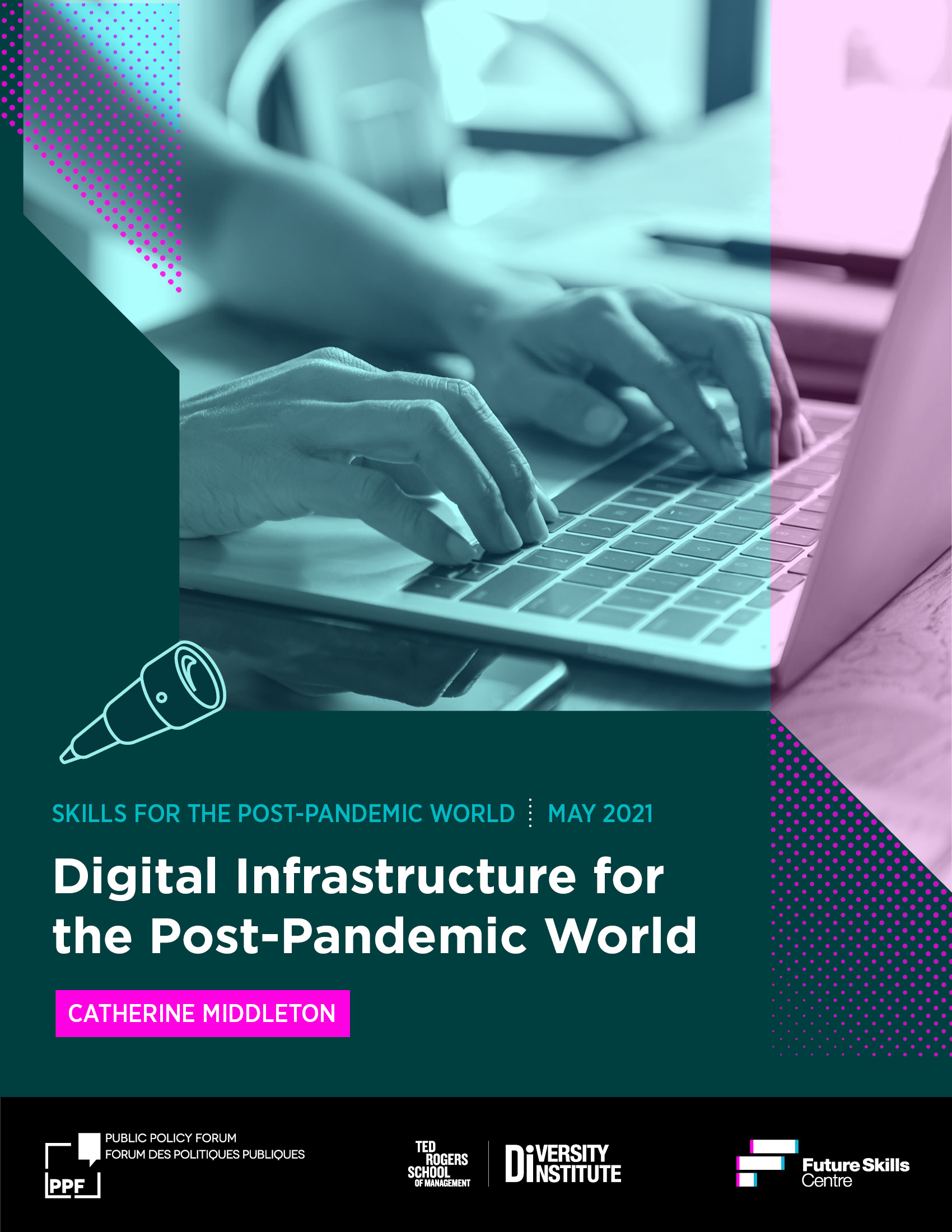
Digital Infrastructure for the Post-Pandemic World
Series | Skills for the Post-Pandemic WorldKey TakeAways
- Geography and affordability are two key factors in accessing the digital infrastructure households need to work from home or participate in online training. Remote locations only have access to poor or unreliable connections and those come at a price that can be several times higher than what urban Canadians are asked to pay. Those with lower incomes — regardless of where they live — often find the costs of such services as internet and cellphones prohibitive.
- The communities that are most vulnerable to marginalization in the new digital economy — Indigenous peoples, immigrants, low-income Canadians of all ethnic backgrounds, and those who live in remote locations — are also those who have the most to gain from the greater availability of remote work options and more accessible online skills training. Policies that address this disparity must keep that top of mind.

Executive Summary
If Canadians thought the country was speeding towards a digital economy before the pandemic, they couldn’t help but feel it had arrived — virtually overnight — after the virus touched down in Canada.
Indeed, the need for Canadians to work and study from home to “flatten the curve” has become the foundation for much business activity today. When lockdowns hit in March 2020, many working lives, not to mention social lives, went from in-person to online. A total of 4.7 million Canadians who do not normally do so started working from home. As of December 2020, nearly a third of Canada’s workforce was still working from home, including 2.8 million people who would not normally do so.
Ironically, while digital business and education theoretically could ensure better access to both for a large number of Canadians, restricted internet access will block this for many. In short, digital transformation has been experienced unevenly and, at least so far, has served to deepen some inequalities rather than ease them.
Access to a computing device and a reliable internet connection is essential according to Canada’s broadcasting and telecommunications regulator, which named broadband internet a “basic service.” And yet, it’s not a service accessible to everyone. Geography and affordability both play roles in limiting access for many. There are still locations in Canada where internet service is inaccessible or impractical. Either the quality is non-existent or unacceptable or the cost is prohibitive — sometimes it’s both. Residents of Nunavut, for example, pay six times more for broadband service than the average Canadian. Internet providers respond to market demand and, in these sparsely populated regions, it’s clear government government action is necessary to make good on the CRTC’s assertion of access as a right. Affordability remains another challenge for some urban and rural households alike.
Internet inaccessibility often hits already marginalized communities in ways that compound already existing discrimination. The CRTC found that in 2020, just 34.8 percent of First Nations reserves and 45.6 percent of rural households have reliable and affordable internet access, while 98.6 percent of urban households do. Access among those who speak neither French or English — often new Canadians —slips to 90.6 percent. This is related to the number of racialized households in the Greater Toronto Area that are finding at-home schooling challenging. More than 25 percent of such households said their children were not able to complete their homework because they didn’t have access to a computer at home.
Figure 2. Challenges for children accessing the internet for schoolwork
It is very or somewhat likely that, as your children do their schoolwork at home due to the coronavirus outbreak they:

Source: Environics Institute, Diversity Institute, and Future Skills Centre (forthcoming). Survey on Employment and Skills, Wave 2 (December 2020).
A federal government “connectivity strategy” from 2019 set the goal of providing good connectivity to 98 percent of Canadians by 2026, and 100 percent by 2030. Meanwhile, programs such as Rogers’ Connected for Success, TELUS’ Internet for Good and the federal government’s Connecting Families exist, but don’t offer the basic standard speeds of connectivity. And in well-serviced households with multiple users — school-aged children and parents who are working from home, for example — even this standard is proving to be inadequate.
Compounding the barriers of geography and income are such factors as time and access. Those who can’t afford internet service are relying on public access, much of which — coffee shops and municipal buildings, for example — has been shuttered during the pandemic. Places such as libraries require travel time from users and such places are operating at reduced capacity. Households stuck sharing computing resources may find similar conflicts.
RECOMMENDATIONS
- Public internet access points;
- Financial support for household internet access;
- Awareness and sustainability of digital infrastructure initiatives; and
- Exploring training opportunities enabled by television and telephone
Thank you to our partners


Skills for the Post-Pandemic World series is funded by the Government of Canada’s Future Skills Program

With support from









